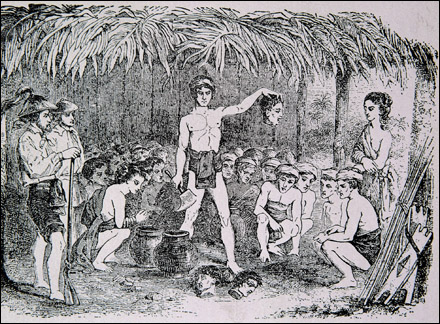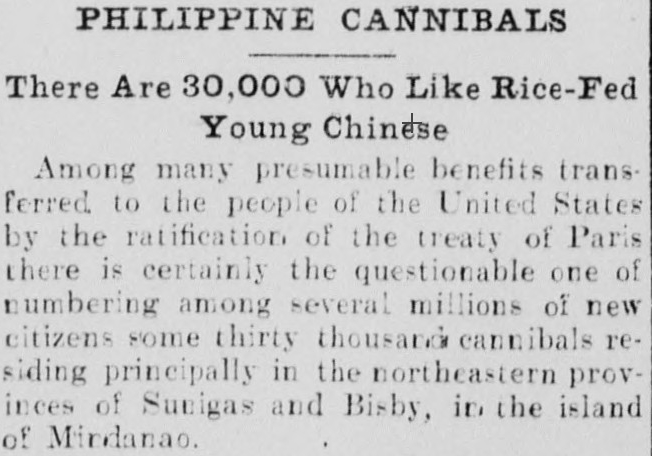It was the early 90’s and it would still be a few more years before social media was introduced. The internet was exclusive to a handful of people but there were growing numbers of mobile phone users. Entertainment for “common people” is mostly divided into two categories: the repertoire of Soap Operas on their television and, of course, the endless hours of chatting with their kumares and kumpares during their afternoon siestas. It was during these times that urban legends like Bloody Mary and the infamous Mananabas gained tremendous popularity – even rivalling the Spanish romantic telenovelas. Even today, many of us can still recall these tales with chills and terror.
Among these myths are the stories of Maria Labo and Teniente (or Kapitan) Gimo. I find myself attracted to these for the reason that it is somehow a hybrid of folklore and modern day. Tales which revolve around individuals who are allegedly an Aswang in disguise, living among their prey. As I revisited these infamous tales, I thought it might be worth sharing the horrifying, yet real and documented stories about the ancient customs of our ancestors which parallel these macabre stories we have grown to love and hate.
Urban Legends of a Scar-Faced Woman
There is a gruesome story of a woman, turned vampire, somewhere from Iloilo or Capiz that took rural and urban communities by storm. A caring mother and wife wanted to give her family an affluent life, so she tried her luck in Canada as an Overseas Filipino Worker (OFW). It was said that this lady worked for an employer who was suffering from an unknown disease. Later on before his dying breath, the employer passed on his alleged vampiric power to the unknowing caregiver. The lady accepted the said power without knowing the staggering price she would pay.

The effect of the curse only took hold as the OFW returned home to the Philippines. The hunger for human flesh became so dominating, that she eventually killed and cooked her two sons. She was then emerged as full-fledged Aswang, a Philippine folklore creature akin to the vampires and ghouls of western mythology. All hell broke loose when her husband arrived home and saw the twisted acts of his wife. The insanity of the affliction and her craving for human flesh made her offer the cooked flesh to her husband. Fierce fury drove the husband to attack his wife with a bolo. Slashing with a blind fury.
The woman received a serious wound in her face, but managed to escape. Until today she is said to roam all over the Philippines in search of her next meal. In time this lady would be known as “Maria Labo” (labo is an Ilonggo term which means “to slash” using a bolo knife or itak) due to the large scar that make her a grotesque figure of nightmares.
When the Guest Becomes the Main Course
The Shake, Rattle and Roll film franchise introduced to us a kind of story plot that has become a staple in today’s countless horror flicks; people from the big city being invited by a friend from an isolated barrio, from a far flung province, to celebrate their fiesta. Little does the guest know, they will be feasted upon by the hordes of hungry aswang (or any man eating beast) hiding in the guise of a harmless neighbourhood. These creepy tales might take their inspiration from the classic, yet spine chilling, story of Teniente (Lieutenant) Gimo from Dueñas, Iloilo. By most accounts, Gimo was an individual who had an important position or status in his barrio (Teniente del Barrio or Baranggay Captain), so no one really bothered themselves to doubt the real identity.
It is said that Gimo’s daughter invited her friend into their house for a simple yet sumptuous dinner. Because transportation is quiet hard in their barrio and night was coming fast, the daughter of the teniente invited her friend to stay the night. The two shared a bed in the humble home. Although everything seemed safe and sound, there were things that kept the guest agitated and restless. From her bed, she could hear more guests arriving from the neighbourhood. She peaked out the window and saw a large cauldron in the backyard. Trying to sleep, she couldn’t help but notice that the teniente checked their room thrice during the night. Discomforted and suspicious, she asked the daughter of Gimo to switch places. She would sleep near the window while the daughter would sleep near the door. As it happened on the fourth time the door of the room opened, Teniente Gimo, together with some of their other guests, grabbed the person nearest the door and put her in a sack. They proceeded to the backyard where the cauldron was already boiling hot. Unlike the film version, the supposed “dinner” of the Aswang managed to escape from their clutches.
Whether due to the film, a specific incident, or just gossip, stories have spread all over the Philippines about the flesh eating Teniente from Dueñas, Iloilo.
Aswang or Cannibals?

If there is a single commonality between these two spine chilling tales, it’s that these are characters are Aswangs yet their traits are quiet different from the shape shifting flesh and viscera eaters. It is noteworthy to point out that Maria Labo and Teniente Gimo didn’t display
1) shape shifting abilities (transformation from man to a beast like creature and
2) unusual predatory features like sharpened fangs or a thread like tongue.
Indicated in both stories however is that the suspected Aswangs have a desire for human flesh. This idea was somewhat blurry due to the fact that they didn’t eat their victims upon their assault like Aswang usually do; they actually cooked them. The characters themselves might better fall into the category of cannibal instead of Aswang. Cannibalism is an ancient practice or act of humans eating the flesh or internal organs of other human beings. Some associates cannibalism and head hunting to ancient or remote tribal rituals which, up until a hundred years ago, was still practiced in areas of the Philippines.
During the 1800’s, a French traveller by the name of Paul de La Gironiėre witnessed and reluctantly partook in a feast conducted by the Tinguian tribes of Abra. This involved eating the brain from the decapitated head of a rival tribe member. To make it more extreme, they also pounded some of these brains and mixed it with their favourite beverage called Basi (sugar cane wine). In addition to Gironiėre, Dean Worcester, an American zoologist, public official, and authority on the Philippines, also observed the same “feast” among the Kalinga from Luzon. Further, a published article in the Los Angeles Herald (Number 184, 2 April 1899) discussed the cannibalistic practices coming from Mindanao.

Cannibalism is indeed a savage and bloody custom of primitive people yet the practice had a strong and deep meaning. The cannibal was thought to believe they could gain some of the skills and knowledge of the human whom he ate. The said practice was also a facet of grieving among the tribal members when a member of their family/community had died. It is believed that eating the remains of their departed loved one would allow their bodies to become the vessel for the soul of the dead.
Scare Tactics and Propaganda
Stories can be quiet deceiving especially if the intent of those who created it has clandestine motives which fabricate facts and use fear to get the job done. Urban myths and other stories of dark creatures were often times subjected to a type of propaganda during the Spanish and American colonization periods. More recently, these stories are utilized in order to ensure the people (specifically the young ones) avoid skulking and wandering around in the middle of the night.
But no matter how fictional these stories are, its lasting effect on people should not be entirely underestimated. In an article written by Ver F. Pacete in Sun Star Bacolod entitled “Teniente Gimo: Not the Movie”, he implied that the circulating story of Teniente Gimo greatly affects the people to this day. The stigma is still vivid in the memory of the community, which made the descendants of Gimo settle far away from their own village where nobody would dare approach them. There are a times when Teniente Gimo sent food for the convent of his friend, Fr. Leon Abillar (Aglipayan Parish Priest of Dueñas, Iloilo). It was said the priest hesitated to eat the food brought by the teniente because of the stories. Whether this story is hoax or not, there is no denying that the impact it leaves among us is astoundingly real and enduring.
Reading between the lines: Truth in Fiction
Urban legends tends to vary in the character’s origin and plot, which results in discrepancies and unreliability. Despite the different versions that sometimes came out of nowhere, there will always be a predominant element that remains common; an unexplained event emblazoned with horror that leads to violence and mystery. Perhaps man by nature has a penchant for storytelling, whether the content of their tales are partly made up or a work of sheer rumours and hoaxes.
Just because these fictional narratives and urban legends may not possess facts in every line and paragraph, doesn’t always mean that those tales are superficially entertaining and unworthy to take a serious understanding to. Urban legends will always hold an ambiguous truth, for they are made to reflect things connected to man and his identity. This is evident in all the folktales and myths. Every culture in every nation should treasures these most. They are not just long prosaic tales of men and women of the past, they are answers to who we are and where we belong. Thus, the truth they present to the listeners (and readers as well) have higher value than the cold hard facts.
Currently collecting books (fiction and non-fiction) involving Philippine mythology and folklore. His favorite lower mythological creature is the Bakunawa because he too is curious what the moon or sun taste like.


